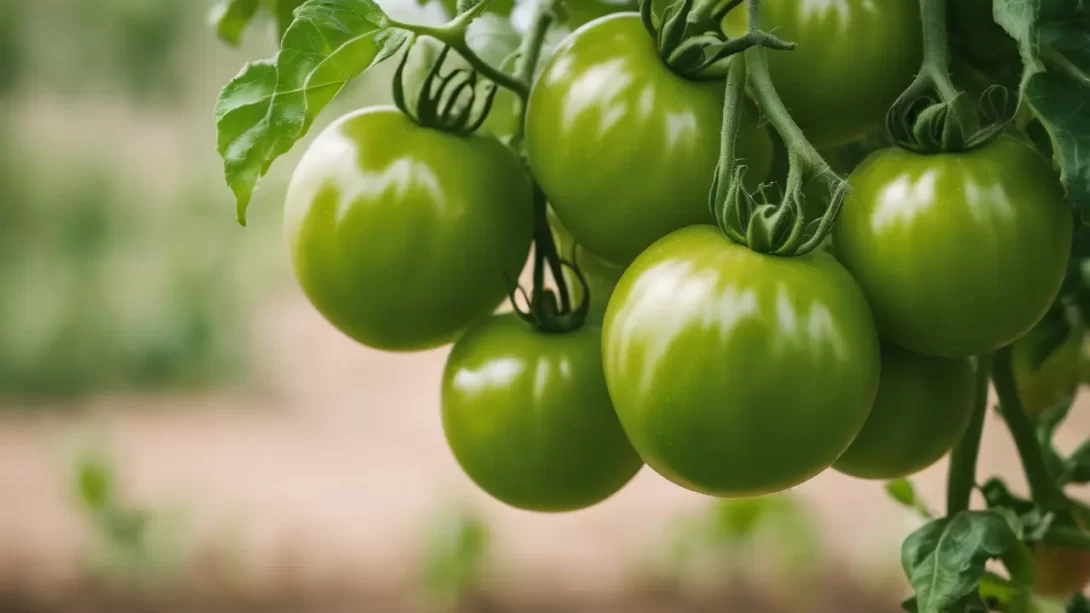Gardening enthusiasts often face the challenge of tomatoes that stubbornly refuse to turn red. This common issue can be frustrating, especially after investing time and effort into nurturing these plants. Understanding the underlying causes and solutions can help gardeners coax their tomatoes to reach that desired ripe, red state.
Tomato Ripening
Tomato ripening is a complex process influenced by various internal and environmental factors. The ripening process involves the breakdown of chlorophyll and the production of lycopene, which gives tomatoes their characteristic red color. Temperature, light, and the overall health of the plant play pivotal roles in this process. Ideal conditions are crucial for tomatoes to transition from green to red effectively.
Common Reasons for Delayed Ripening
Several factors can contribute to delayed ripening in tomatoes:
- Inconsistent Watering: Both overwatering and underwatering can stress the plant, affecting its ability to ripen fruit properly.
- Nutrient Imbalances: Tomatoes require a balanced mix of nutrients for healthy growth and ripening. An excess or deficiency of certain nutrients, particularly nitrogen, can impact the ripening process.
- Temperature Extremes: Tomatoes ripen best at moderate temperatures. Extreme heat or cold can slow down or halt the ripening process.
Identifying and addressing these issues is the first step in encouraging tomatoes to ripen on schedule.
Environmental Factors
The environment plays a crucial role in the ripening of tomatoes. Understanding and managing these factors can help in encouraging tomatoes to turn red:
- Temperature Management: Tomatoes typically ripen best at temperatures between 68°F and 77°F (20°C – 25°C). In cooler climates, using cloches or greenhouse covers can help maintain optimal temperatures. In very hot conditions, providing shade can prevent the fruit from becoming stressed by excessive heat.
- Light Exposure: While tomatoes require sunlight for growth, direct exposure during the ripening phase is not critical. In fact, too much direct sunlight can lead to sunscald, a condition that can hinder the ripening process.
Plant Care and Maintenance
Proper care and maintenance of tomato plants can significantly influence their ability to ripen fruit:
- Proper Watering Techniques: Consistent watering, providing enough water to keep the soil evenly moist, is key. Avoid fluctuations in watering as much as possible.
- Fertilization and Soil Health: Use a balanced fertilizer that is not too high in nitrogen, as nitrogen encourages leaf growth at the expense of fruit. Ensure the soil is rich in phosphorus and potassium, which support fruit development.
- Pruning and Plant Support: Pruning excess foliage can help improve air circulation around the fruits and focus the plant’s energy on ripening. Supporting plants with stakes or cages can also promote healthy growth and ease the ripening process.
Ethylene and Ripening
Ethylene gas is a natural plant hormone that plays a significant role in the ripening process. Gardeners can use ethylene to their advantage:
- Encouraging Ethylene Production: Practices such as lightly pinching the stems can stimulate the plant to produce more ethylene.
- Using Ethylene Gas Ethically: Placing green tomatoes in a paper bag with a ripe banana or apple, which emit ethylene gas, can speed up the ripening process.
Harvesting Strategies
When dealing with tomatoes that are slow to ripen, certain harvesting techniques can be beneficial:
- Partial Harvesting: Sometimes, removing a few fruits can encourage the plant to focus its energy on ripening the remaining tomatoes.
- Ripening Off the Vine: If frost is imminent or if tomatoes are stubbornly green, you can harvest them and allow them to ripen indoors. Place them in a warm spot away from direct sunlight, which can help speed up the ripening process.
Alternative Uses for Green Tomatoes
Unripe, green tomatoes can still be a culinary delight. Instead of discarding them, consider these uses:
- Fried Green Tomatoes: This classic dish involves coating slices of green tomatoes in batter and frying them until crispy.
- Green Tomato Chutney: Green tomatoes can be used to make a tangy and flavorful chutney, perfect as a condiment or for adding flavor to dishes.
- Pickling: Pickled green tomatoes are a great way to preserve your harvest and can be a delicious addition to salads and sandwiches.
Conclusion
While it can be challenging when tomatoes refuse to turn red, understanding the factors influencing their ripening process can help you take corrective action. From managing environmental conditions to employing harvesting and ripening techniques, there are several ways to encourage tomatoes to reach their full, ripe potential. Moreover, green tomatoes themselves offer unique culinary opportunities, turning a potential disappointment into a delicious treat. With patience and adaptability, you can enjoy your tomato harvest in its various stages of ripeness.



